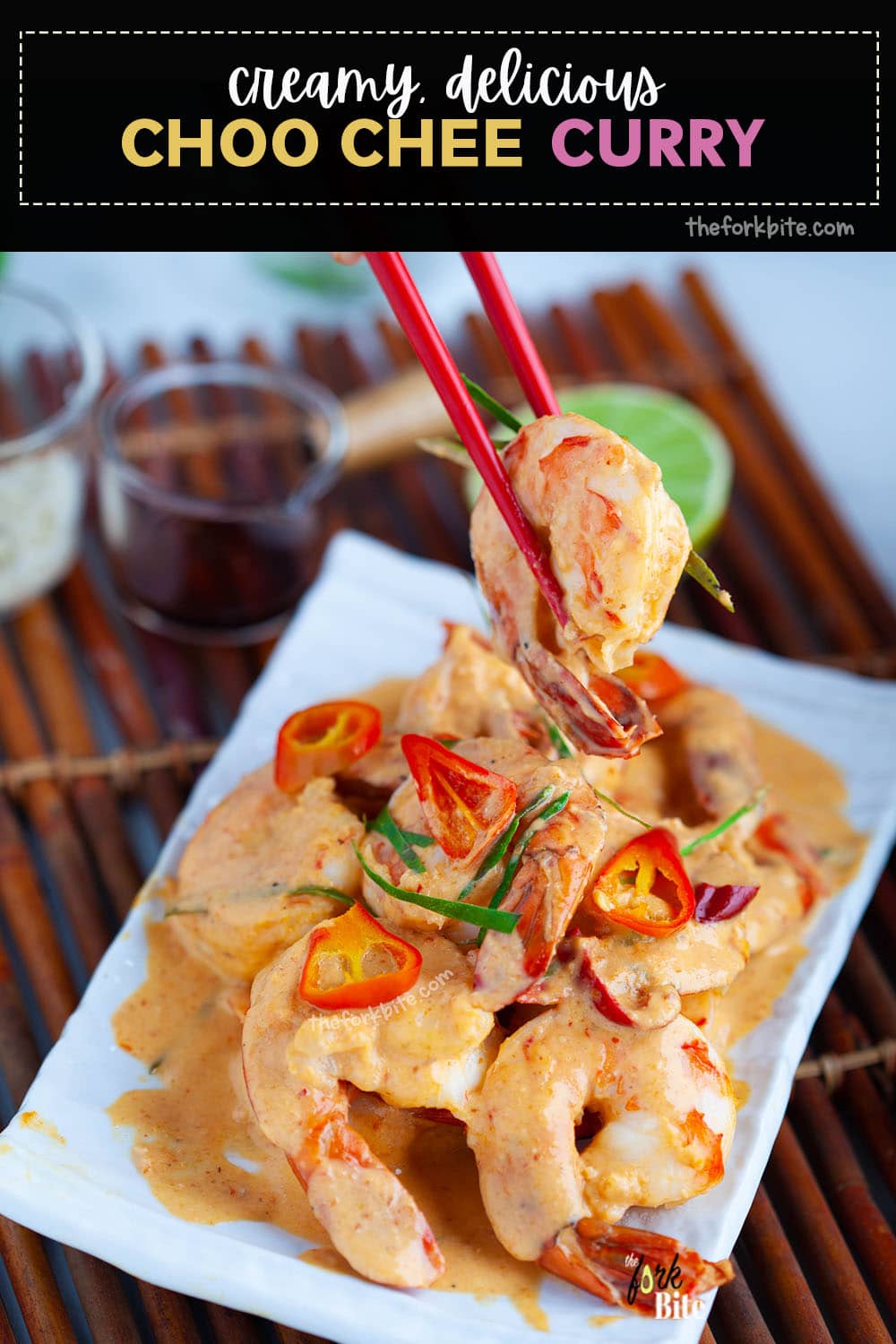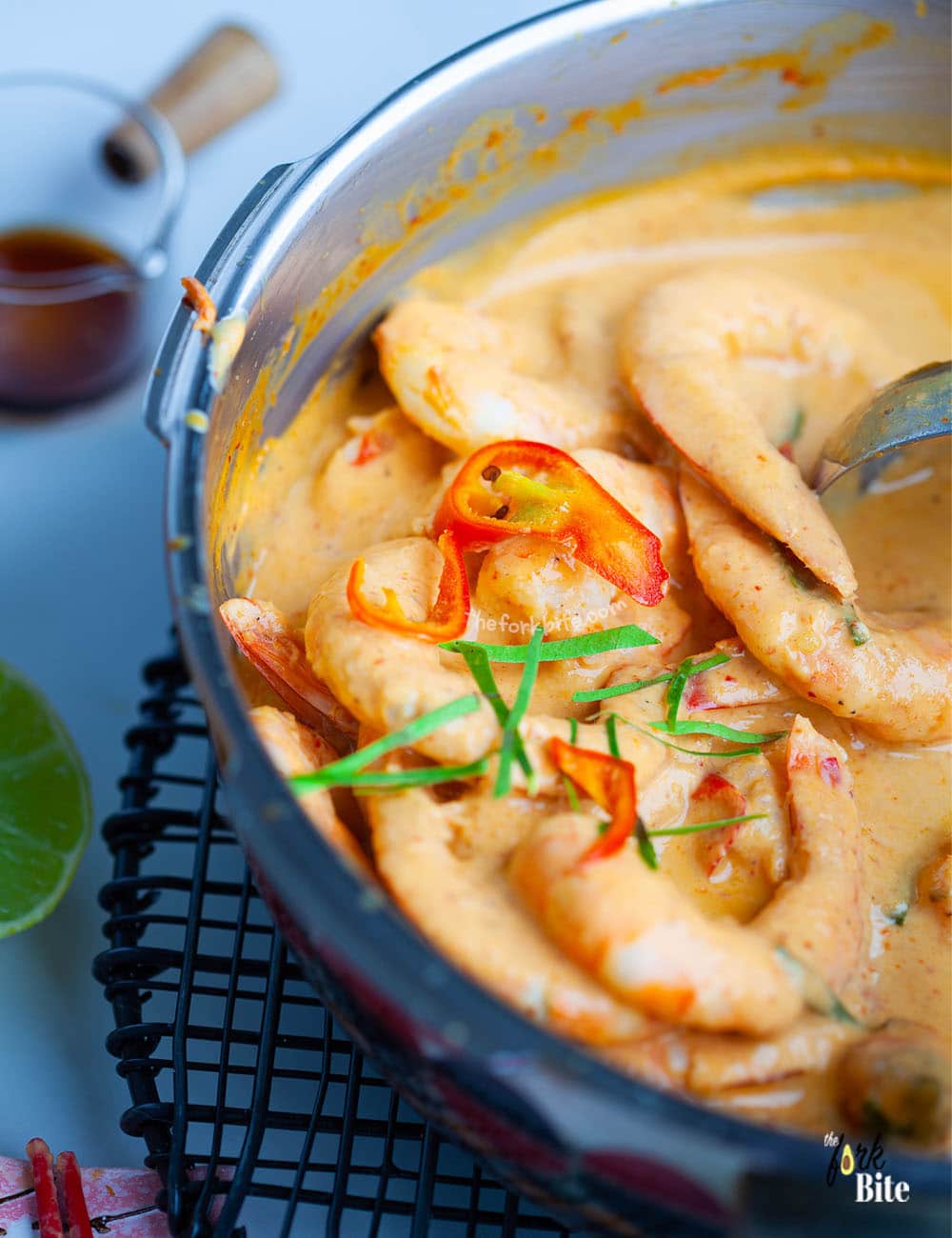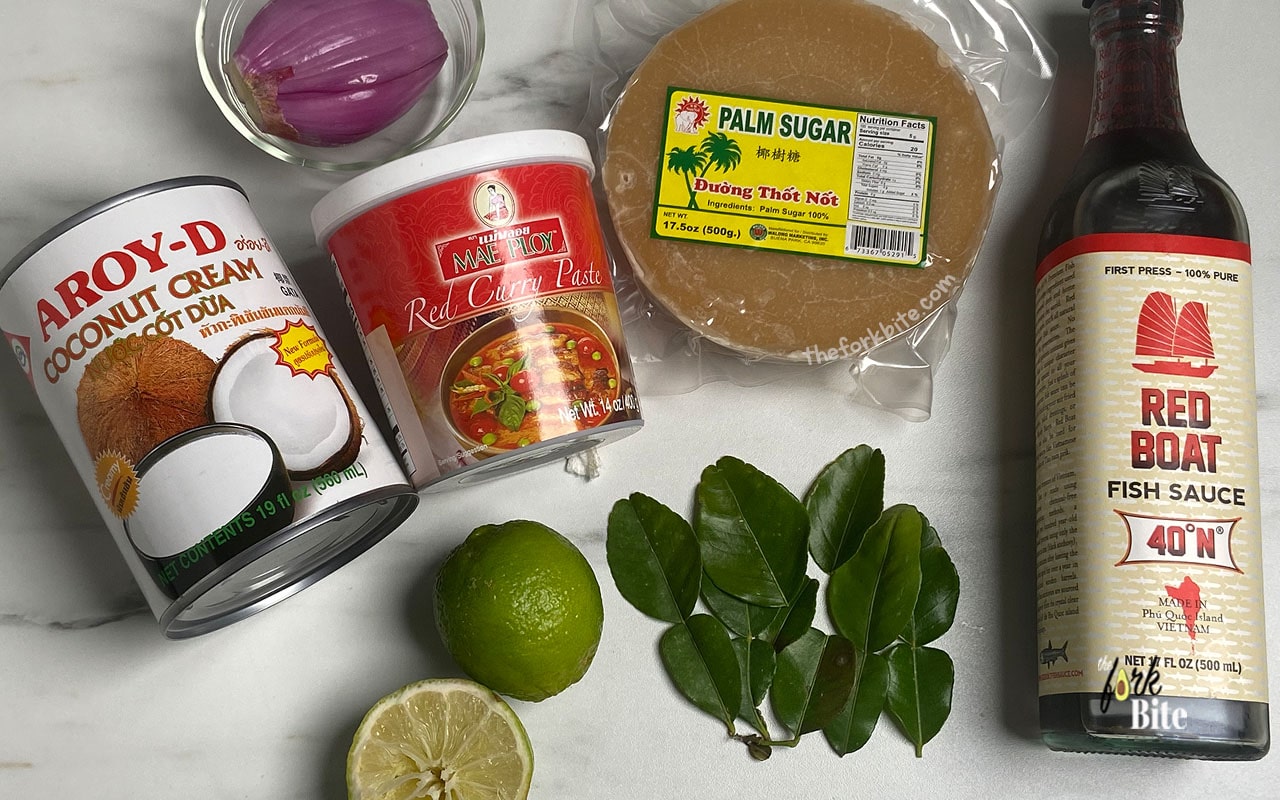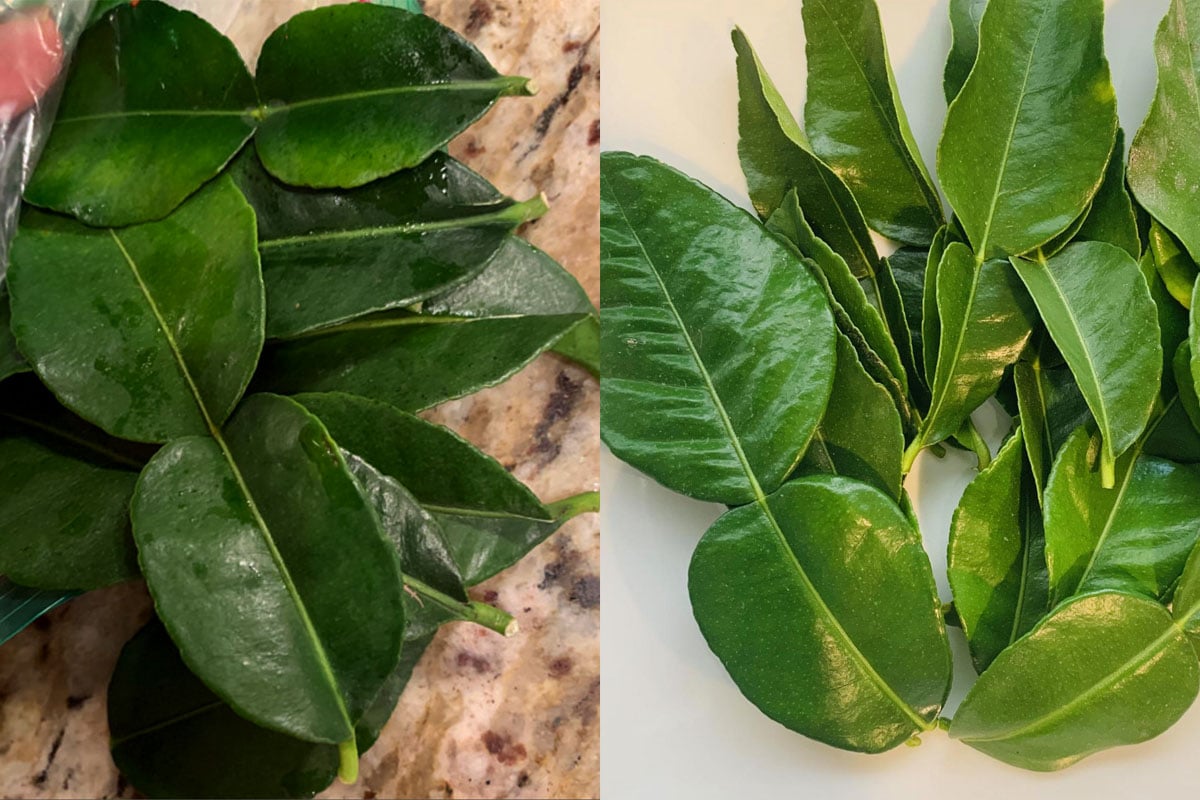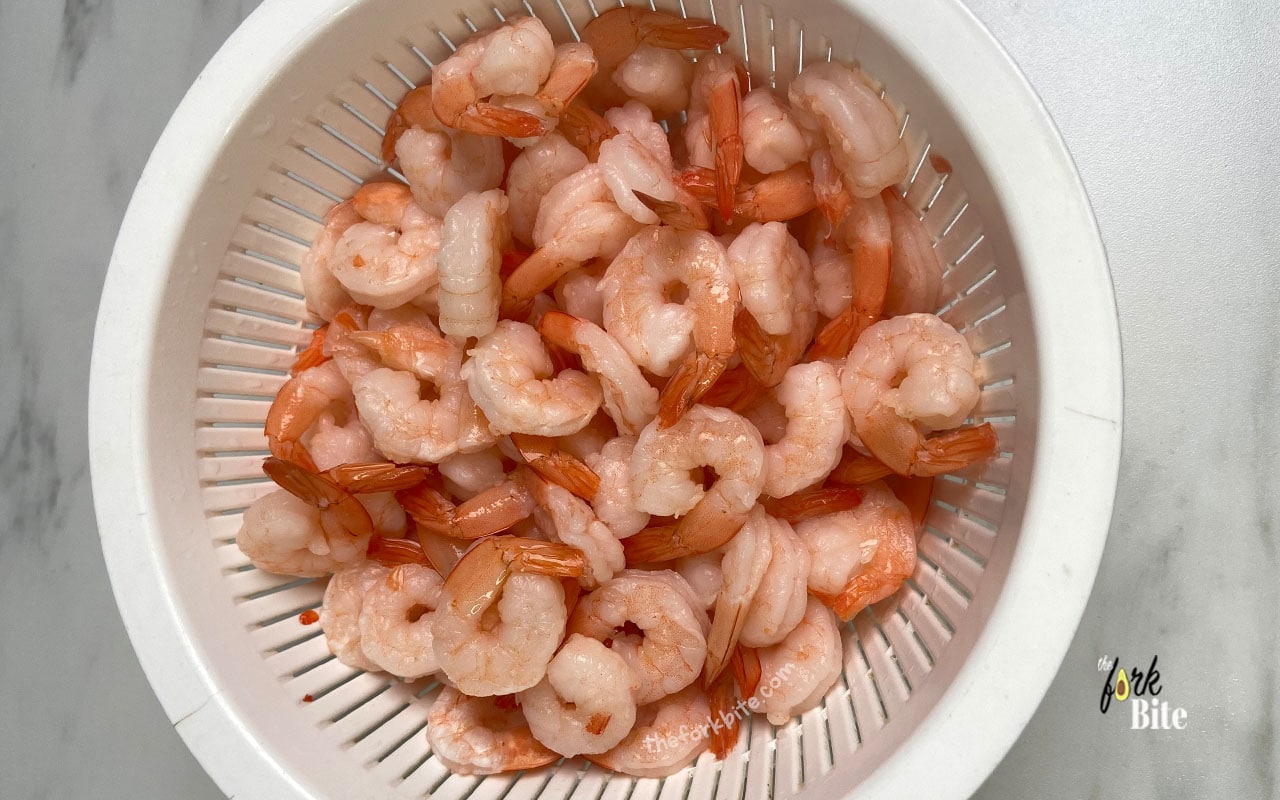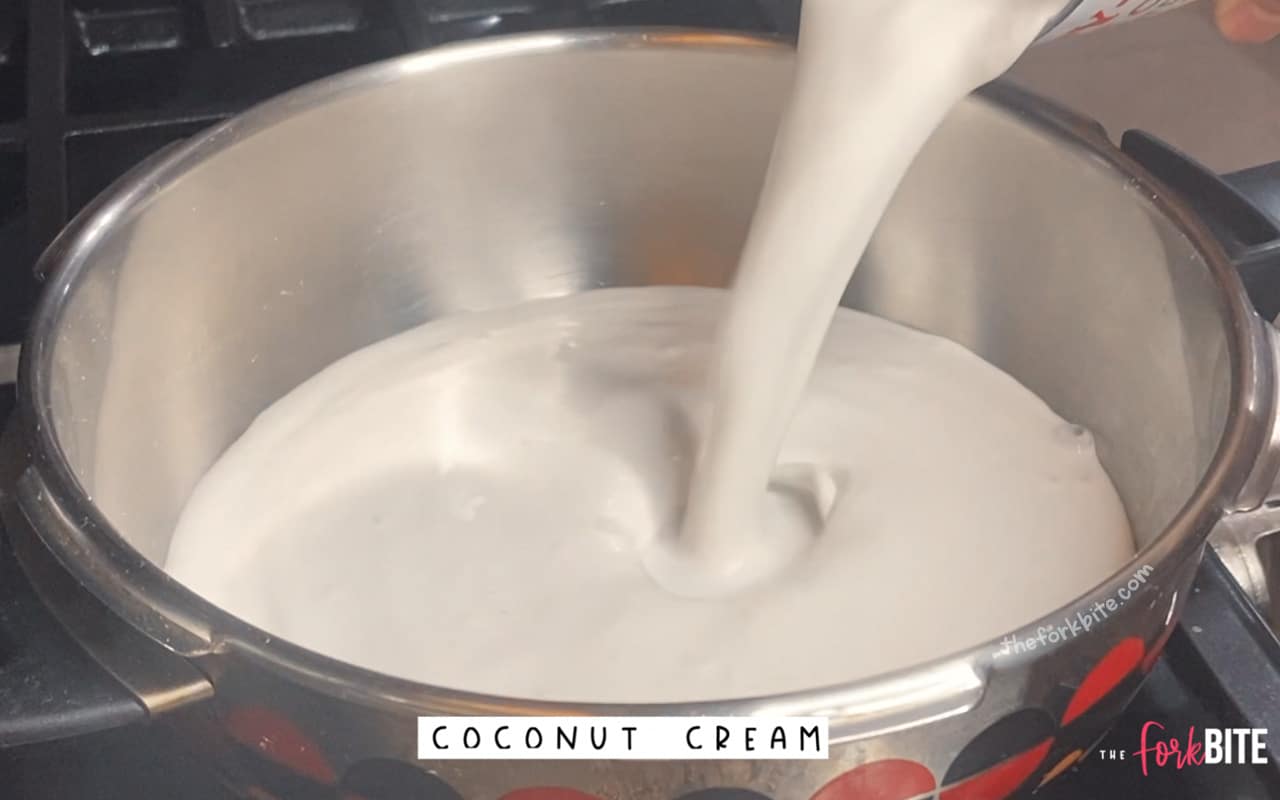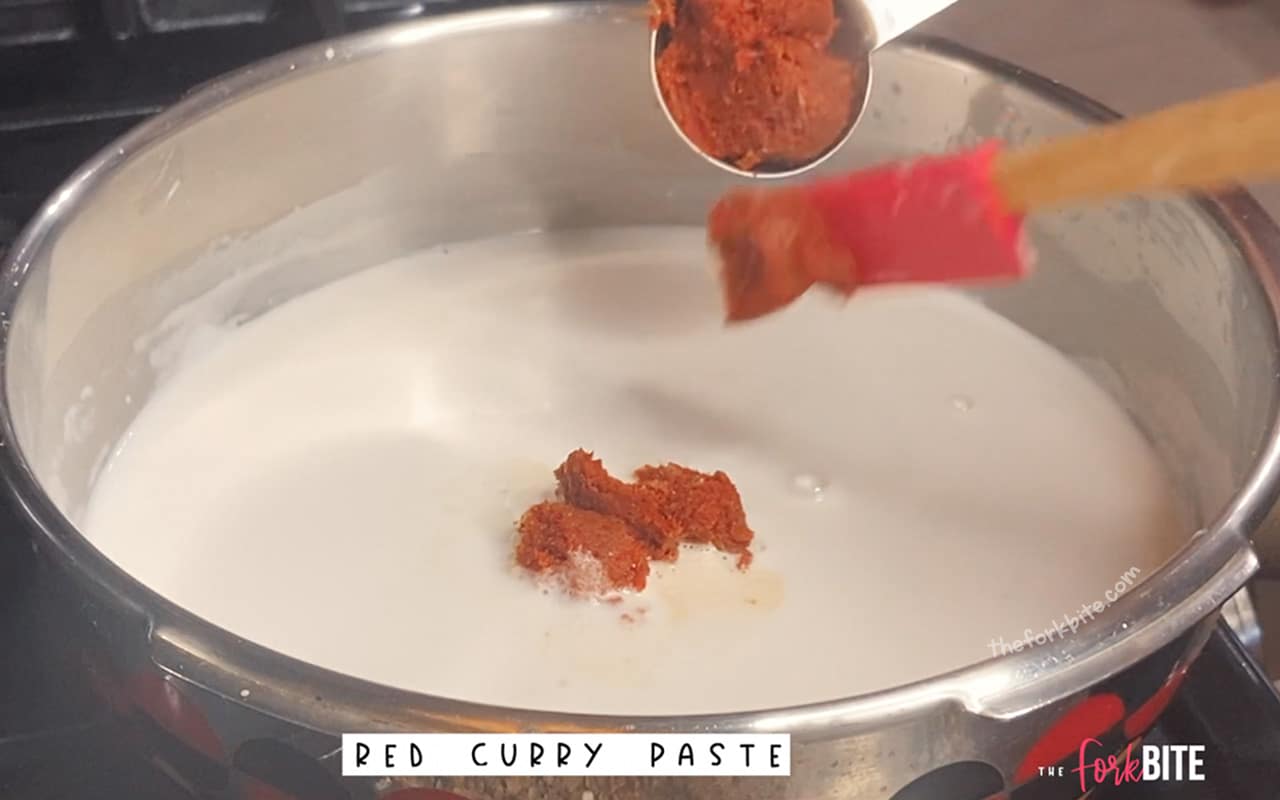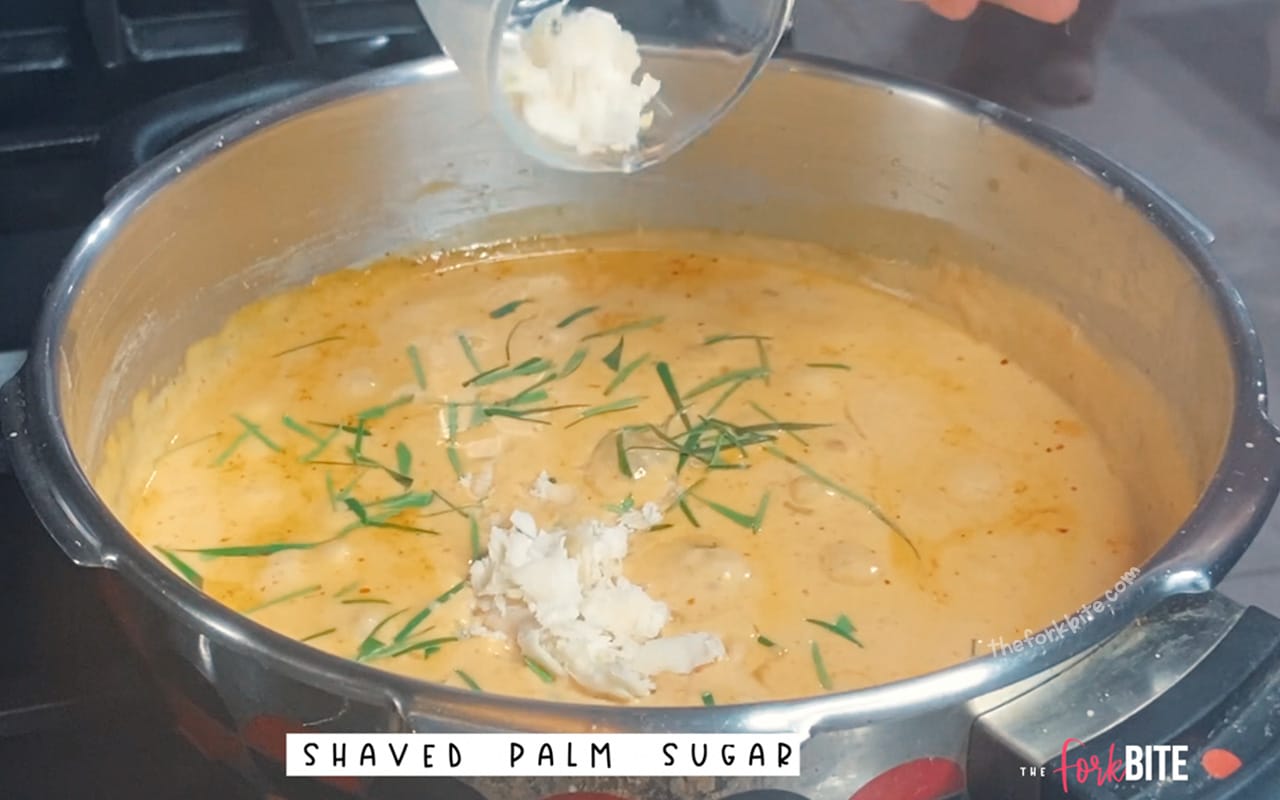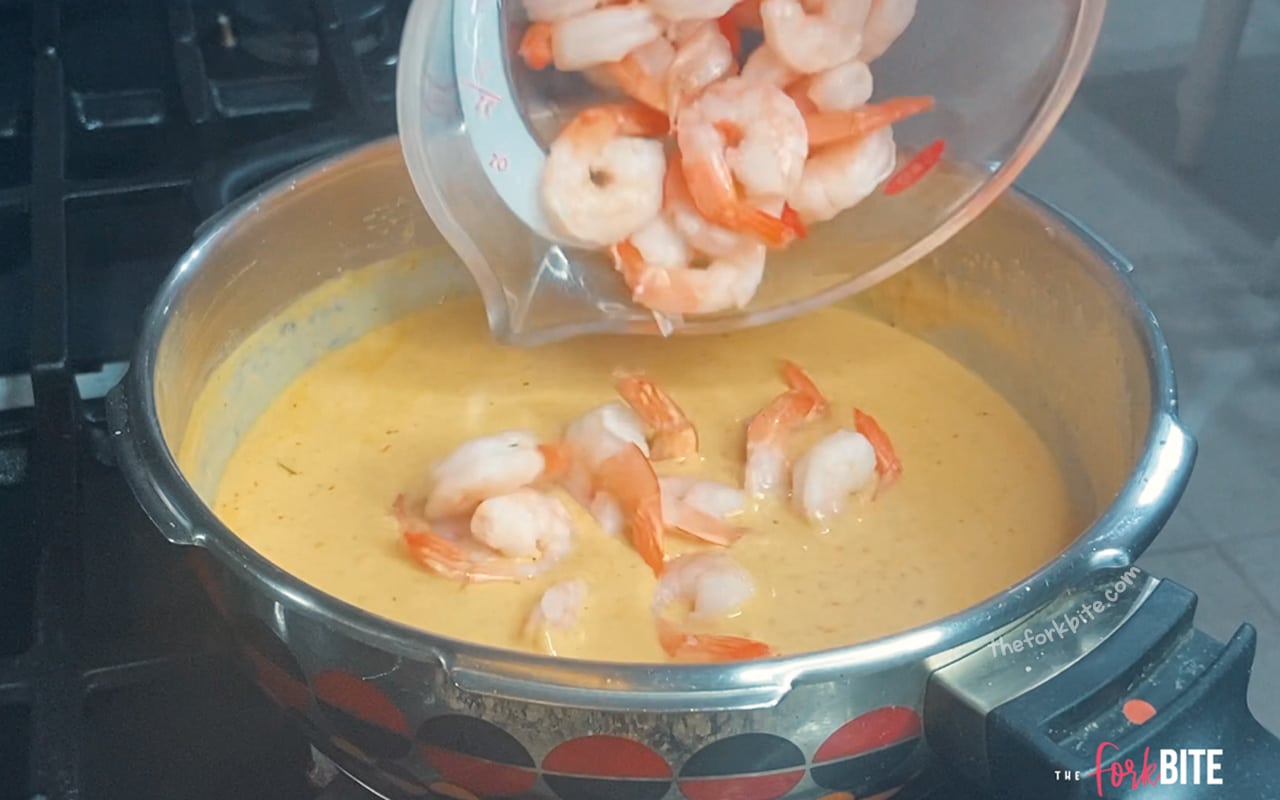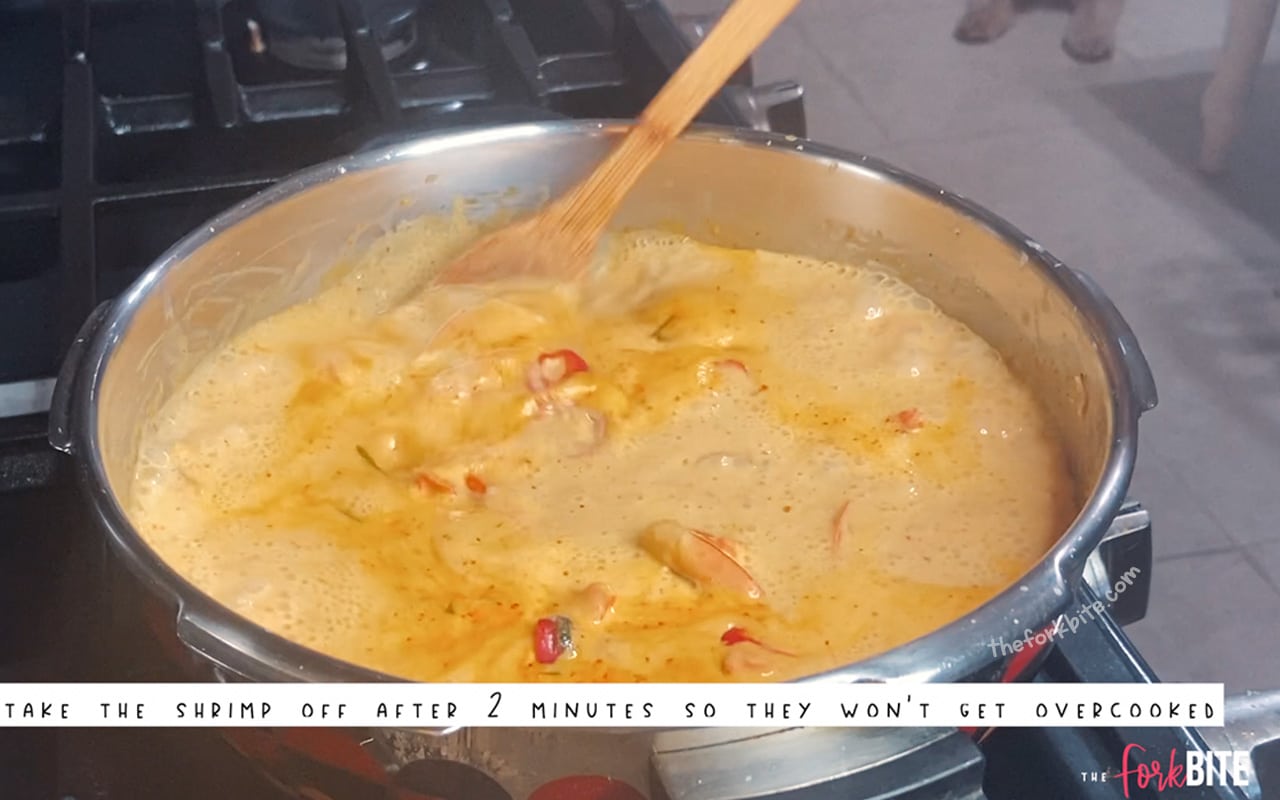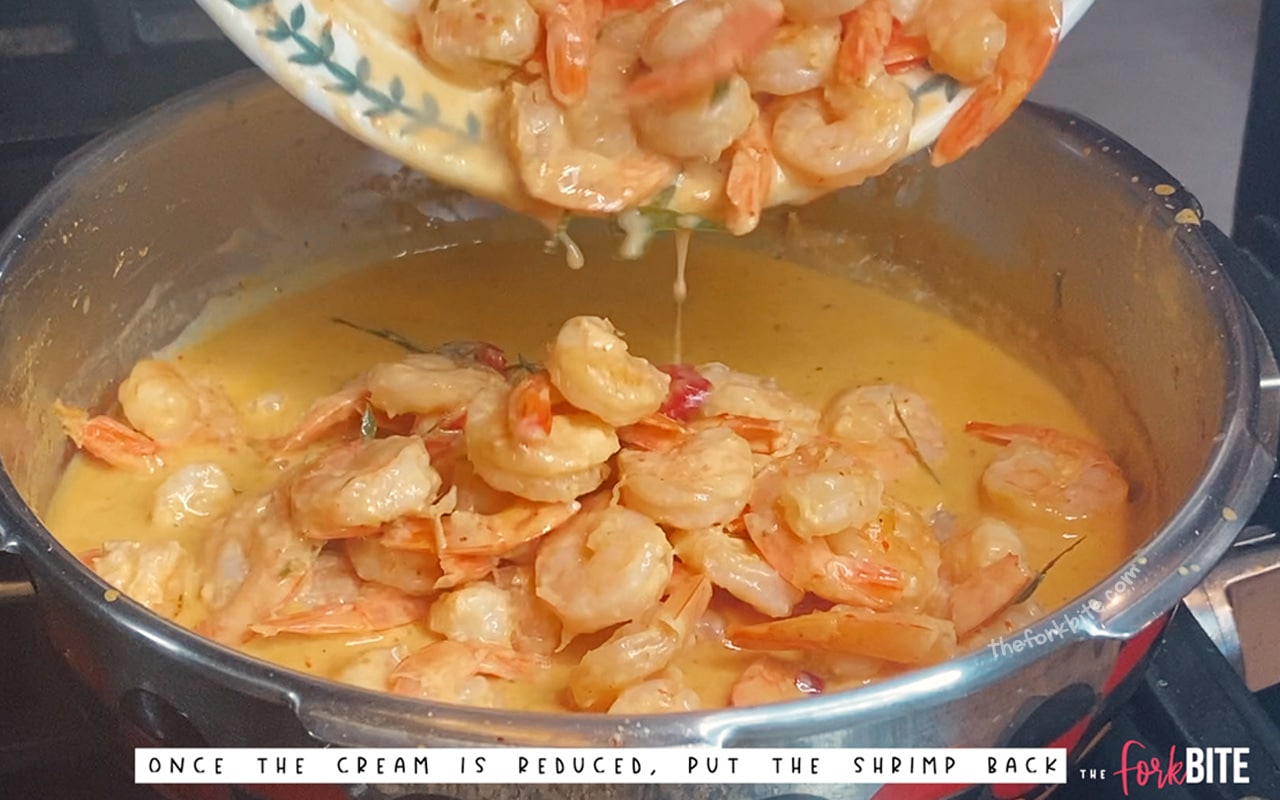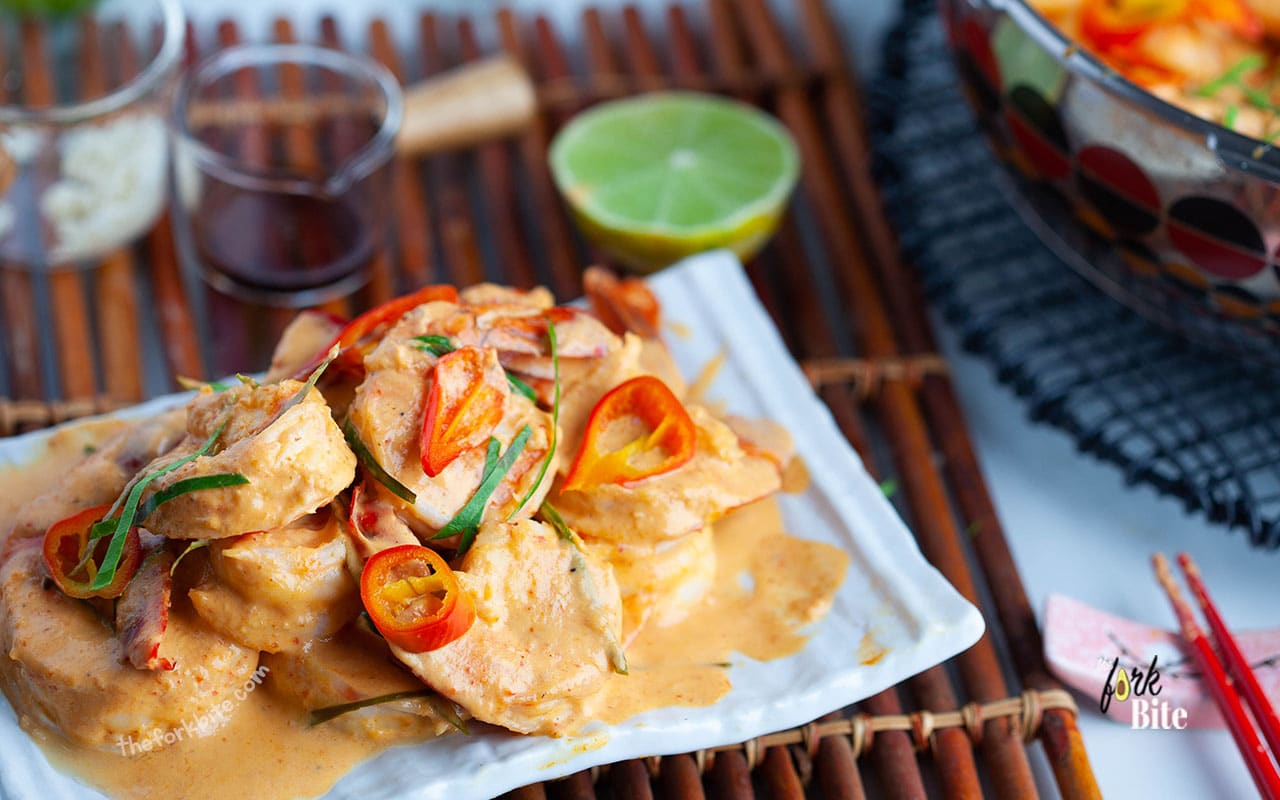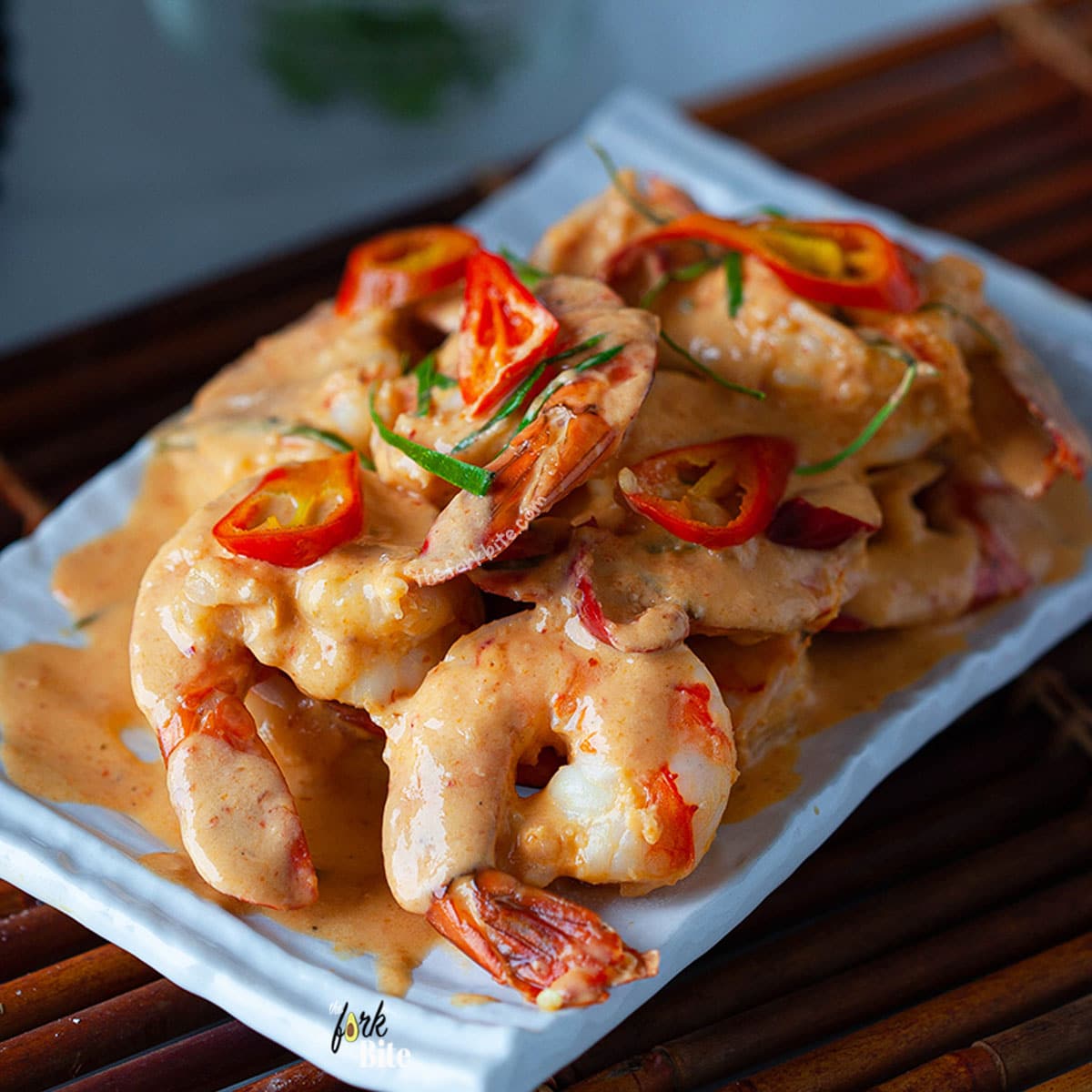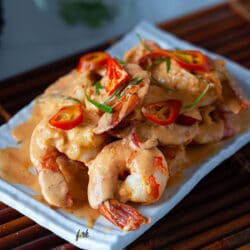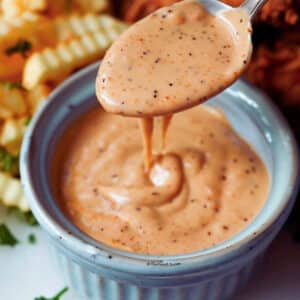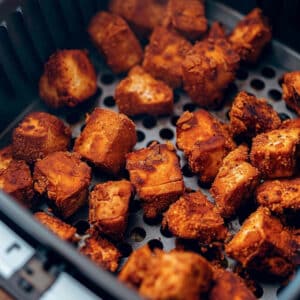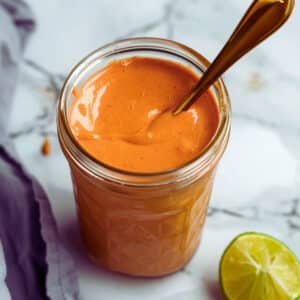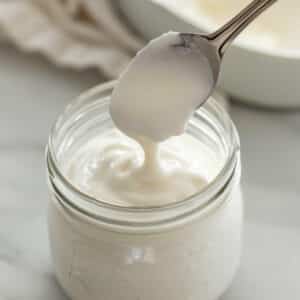How would you like Choo Chee Curry, a vibrant Thai fusion dish that takes 20 minutes to make? I know I love it! This creamy and highly festive dish is choo chee curry with shrimp. It contains a highly fragrant and delicious Thai red curry sauce that includes thick, creamy coconut, a kaffir lime, and a tad of sugar.
Why this is a favorite among all?
Chu chee curry contains a vast amount of wonderful flavor. I have found that I just love the glossy coconut and red curry sauce, including a touch of spice and a magnificent kaffir lime flavoring.
Best of all, it is an elegant meal that you may create in just a matter of minutes!
What is Choo Chee?
Choo chee -which is also spelled “chu chee” – is a very thick, red-colored Thai-based curry that is created with all of your seafood favorites. These include scallops, fish, squid, shrimp, and other types of seafood pieces.
It originates from the Southern and the Central regions of Thailand. It is a dry type of curry; it makes a certain sound as you fry the paste.
“Choo Chee” is the name of this sound. Combinations of fish sauce, kaffir lime, and palm sugar are used to create a remarkable tasty treat that abounds with Thai origins.
Grab these ingredients
1 Coconut cream
The first ingredient used in this tasty recipe is coconut cream. If you prefer, you may use coconut milk instead.
I just have to interject – at this point - that not all coconut milk and creams are created equally.
Many have higher levels of fat and cream in them. If you opt for coconut cream, you will find it is thicker than coconut milk. I prefer coconut cream to coconut milk.
Yes, it is a little expensive. Yes, it has a lot more calories and fat. It has a lot more flavor, though. Also, it is richer.
You will find that you end up with restaurant-quality ChuChee if you go with coconut cream. If you use coconut milk, you will find that the sauce is significantly less thick.
2 Red curry paste
Now, of course, you can’t create Chu Chee curry without that robust curry paste. I personally prefer an authentic, distinguished taste, so I use Mae Ploy Thai Red Curry Paste.
One thing you will immediately notice about this paste is that it is a little spicier and hotter than other types of curry paste.
If you enjoy bold tastes, you will love this paste! You may purchase other brands at grocery stores that specialize in Thai foods and ingredients online or even make your own homemade Thai curry paste - the choice is yours!
3 Kaffir lime leaves
When making Choo Chee curry, gather up some kaffir lime leaves. These are different than the standard limes or the Persian-based varieties that we usually use in preparing dishes.
I do not use the actual fruit. For this dish, the flavor is in the leaves. In many instances, you may find them fresh at your local Asian market. Or they may be sold in a bottle or dried.
Substitute for Kaffir leaves:
These leaves are very distinct in scent. You may substitute kaffir lime with one heaping teaspoon of lime zest for each leaf if not available. If you so desire, you may also use a tad of lime juice.
If you find an abundance of leaves leftover, place them in a Ziplock bag and store them in the freezer. They will last for anywhere from 9 to 12 months.
4 Fish Sauce
To achieve that level of saltiness and flavoring that makes Thai dishes popular, you must utilize fish sauce. If you have an issue with fish sauce, it may be substituted with just a teaspoon of soy cause or a little salt.
Most supermarkets and online food retailers carry this delicate and highly tasty sauce.
5 Palm Sugar
Palm sugar is delicious! It comes in little hard discs that must be shaved with a knife. The sugar is all-natural and even includes a mild hint of caramel-like flavoring.
If you cannot locate palm sugar, you may use coconut sugar that has been crystalized or a light-based brown sugar in its place.
6 Red Chilies
I have found – for this ingredient - you must go with your heat level preference. I, personally, use red eye chilies and Thai red or green chilies to spice the dish up a bit.
These are referred to as “Prik Kee Nu.” Use as little or as much as you like!
7 Large Red Chilies
I always go for large red chilies for my Choo Chee curry. It is more for the color and a little for the taste. These are actually very mild.
If you prefer, you may substitute red bell pepper. Just remember to slice them finely before placing them in the dish.
8 Asian Red Shallots
This ingredient will pull in all other flavors of your dish. If you are unable to locate this red shallot ingredient, feel free to substitute red onion.
How to make Choo Chee curry (1st method)
I used this method because it's more simple and I like the creamy consistency of the coconut cream. I promise this is really yummy, even my picky son who doesn't eat Asian food would ask for seconds.
Honestly, the sauce itself is enough for me to eat with plain white rice, that's how delicious is this dish.
Step 1
First, clean your shrimp and ensure that they are completely thawed. Dry each with a paper towel and just set to the side.
Step 2
Heat 1 tablespoon of oil. Once heated, stir in the onion and allow it to soften.
Step 3
Next, add that coconut cream (or milk) and stir the mixture up. Cook in medium heat until it starts to bubble.
Step 4
Add the red curry paste. Use a mesh strainer ladle and a spoon to help the paste breaks down or dissolves completely.
Step 5
Mix in that wonderfully tasty palm sugar, fish sauce, chilis, and lime leaves.
Step 6
Now, you can add the shrimp. Place the lid on the pan and steam for up to a minute (if using cooked shrimps) or 2 minutes (for fresh shrimps) on medium heat.
Step 7
Once the shrimp are cooked, take them out using a spider ladle and set them aside (we don't want to overcook the shrimp; overcooked = rubbery shrimp).
Step 8
Reduce heat to thicken the sauce. Once the sauce thickens, put the shrimp back and turn off the heat.
Remove completely from the heat and mix in the lime juice. Now, just set the pan to the side.
Step 9
Get your plates out and prepare:
- Place a scoop of cooked rice onto your plate (or bowl).
- Layer it with cooked pieces of shrimp. Pour your curry creation on top of the shrimp (or seafood).
- Garnish the dish with some of those leftover Kaffir lime leaves and place a red chili on top!
- Get out the spoon and the fork and enjoy!
Notes
- What I do in cutting kaffir leaves: stack the leaves into threes.
- Then, roll them up and finely slice them with a very sharp knife. You may leave the lime leaves in the dish or remove them when serving -the choice is yours. I leave my leaves in because of the zesty flavor that it adds to the meal.
- If you notice a little oil floating on top of the sauce because of separation, no fear! It is completely fine!
Extra tips if using coconut milk instead of coconut cream
If you elect to go with coconut milk, always avoid shaking up the can before opening it. If you find that it has been shaken or not appropriately separated, place it in the fridge for an hour.
The goal is for the coconut cream to be floating along the top of the can.
It is challenging to use coconut milk because you may have to boil it to reach the right level of consistency.
I recommend bypassing coconut milk and choosing coconut cream. Not only is it easier to work with, but it will also result in higher quality, better tasting choo hi recipe curry.
Cooking steps for Choo Chee sauce (2nd method)
Step 1:
Take half of your coconut cream and cook it over medium-high heat until you see that it is thickening.
Step 2:
Allow the coconut cream to come to a bubble, and add the curry paste mixture. Lower the heat a little.
Step 3:
Stir until the curry paste has dissolved. Your kitchen will start to smell like you are cooking in the Far East. Cook for up to 2 minutes.
Step 4:
Combine the Kaffir lime leaves, red chilies, palm sugar, and fish sauce. Add according to your preference.
Step 5:
Place the shrimp in your pan. Put the lid on and cook for about 1-2 minutes. Lower the heat for a short amount of time and then turn it completely off. Now, take the lime and squeeze the juice out of half of it into the pan. Place aside.
Step 6:
Place a scoop of rice on your plate or serving bowl. Then, layer it with cooked chicken. Pour your curry sauce over. Then, garnish the top with the lime leaves and a slice of red chili.
How do you thicken a sauce?
I noticed it always had a little bit too moisture in my earliest days of preparing curry sauce.
Despite my best efforts to eliminate the excess water, I would either cook the vegetables too much or end up with tasteless, dry chicken.
I would pour the extra water off before serving, keeping my fingers crossed that none would seep back into my sauce and that no one would notice what was happening.
Finally, I consulted with my mom. She was, after all, the “expert” in the kitchen. I then learned a few tricks of the trade, in terms of thickening the sauce. I will share these well-guarded secrets with you. They are as follows:
1 Tomato puree or tomato paste
If preparing Italian or Indian dishes, tomato sauces are spectacular! The good news is, tomato-based sauces are also great for thickening up just about any curry sauce. If you choose to use this, add it during the cooking process.
2 Yogurt
Believe it or not, yogurt is a wonderful thickener for curry sauces. It may even be used as a substitute for cream! I have found that Greek yogurt is the best because it does not curdle. Just add a little at a time, not much. If you want, you can even combine it with tomato puree!
3 Cornflour
It does not matter if you are making Chinese curry, Thai curry, or Indian curry; a tablespoon of cornflour with three tablespoons of cold water stirred together will make a wonderful sauce thickener. Pour in your sauce, simmer, allow it to thicken, and you will achieve the perfect consistency.
4 Simmer
It does not matter what sauce or curry you are working with, simmering down on low heat and completely uncovered will help in thickening.
Now, many of these ingredients are not completely authentic, but they help in the thickening process. You may even use combinations of these ingredients. Mix, thicken, and serve!
Related questions
All of the outlined ingredients in this dish are dairy-free and gluten-free. You will need to research the red curry paste and the fish sauce you elect to use to ensure that they are both gluten-free.
Yes, you may use cod, trout, snapper, mackerel, or sea bass. If you prefer squid or scallops, these may also be used. If you use squid or scallops, you will want to avoid pre-cooking them. Add them in before adding the vegetables.
If you use eggplant, mushrooms, bell peppers, or tofu, you may make it into a very tasty vegan dish.
There are also vegan ingredients available, such as soy sauce, vegan fish sauce, tofu cubes, and similar ones
Yes, you may make the sauce ahead. If placed in an airtight container, it will stay fresh in the refrigerator for up to 4 days. You may reheat either in a pan on the stove or place it in the microwave for up to 3 minutes.
You may freeze this for up to one month; however, it is crucial to remove the protein sources. The only issue with freezing for long periods is that the coconut milk may become grainy due to separation.
Rice is the perfect side to this dish. Not only does its neutral flavor mix well with all of the complex tastes of the dish, but it will also soak up the curry sauce and enhance the overall flavor of the dish.
Interesting recipes:
Full Recipe
Choo Chee Curry Recipe
Pin RecipeIngredients:
- 1 lb Shrimp (I used the cooked ones for this recipe) (or fish, chicken, squid, etc)
For Curry Sauce:
- 540 grams Coconut cream
- 1 tablespoon fish sauce
- 1½ tablespoon Palm sugar (adjust according to your sweetness preference)
- 6 pieces kaffir leaves (thinly sliced)
- 1 tablespoon Lime juice
- 1 tablespoon red chilis
Watch the Video:
Instructions:
- First, clean your shrimp (or other seafood you want to use) and ensure that they are completely thawed. Dry each with a paper towel and just set aside.
- Heat 1 tablespoon of oil. Once heated, stir in the onion and allow it to soften.
- Next, add that coconut cream (or coconut milk) and stir the mixture up. Cook in medium heat until it starts to bubble.
- Add the red curry paste. Use a mesh strainer ladle and a spoon to help the paste breaks down or dissolves completely.
- Mix in that wonderfully tasty palm sugar, fish sauce, chilis, and kaffir lime leaves.
- Now, you can add the shrimp. Place the lid on the pan and steam for up to a minute (I used the cooked shrimp here) or 2 minutes (if using fresh shrimp) on medium heat.
- Once the shrimp are cooked, take them out using a spider ladle and set them aside (we don't want to overcook the shrimp; overcooked = rubbery shrimp).
- Reduce heat to thicken the sauce. Once the sauce thickens, put the shrimp back and turn off the heat.
- Remove completely from the heat and mix in the lime juice. Now, just set the pan to the side.
- Place a scoop of rice on your plate or serving bowl. Then, layer it with shrimp (or whatever seafood you used). Pour your curry sauce over. Then, garnish the top with the thinly-sliced Kaffir lime leaves and some slices of red chili.
Notes:
- What I do in cutting kaffir leaves: stack the kaffir leaves into threes.
- Then, roll them up and finely slice them with a very sharp knife. You may leave the lime leaves in the dish or remove them when serving -the choice is yours. I leave my leaves in because of the zesty flavor that it adds to the meal.
- If you notice a little oil floating on top of the sauce because of separation, no fear! It is completely fine!
Credit: Starry Attic
Nutrition Information:
Please note that all nutrition information are just estimates. Values will vary among brands, so we encourage you to calculate these on your own for most accurate results.

